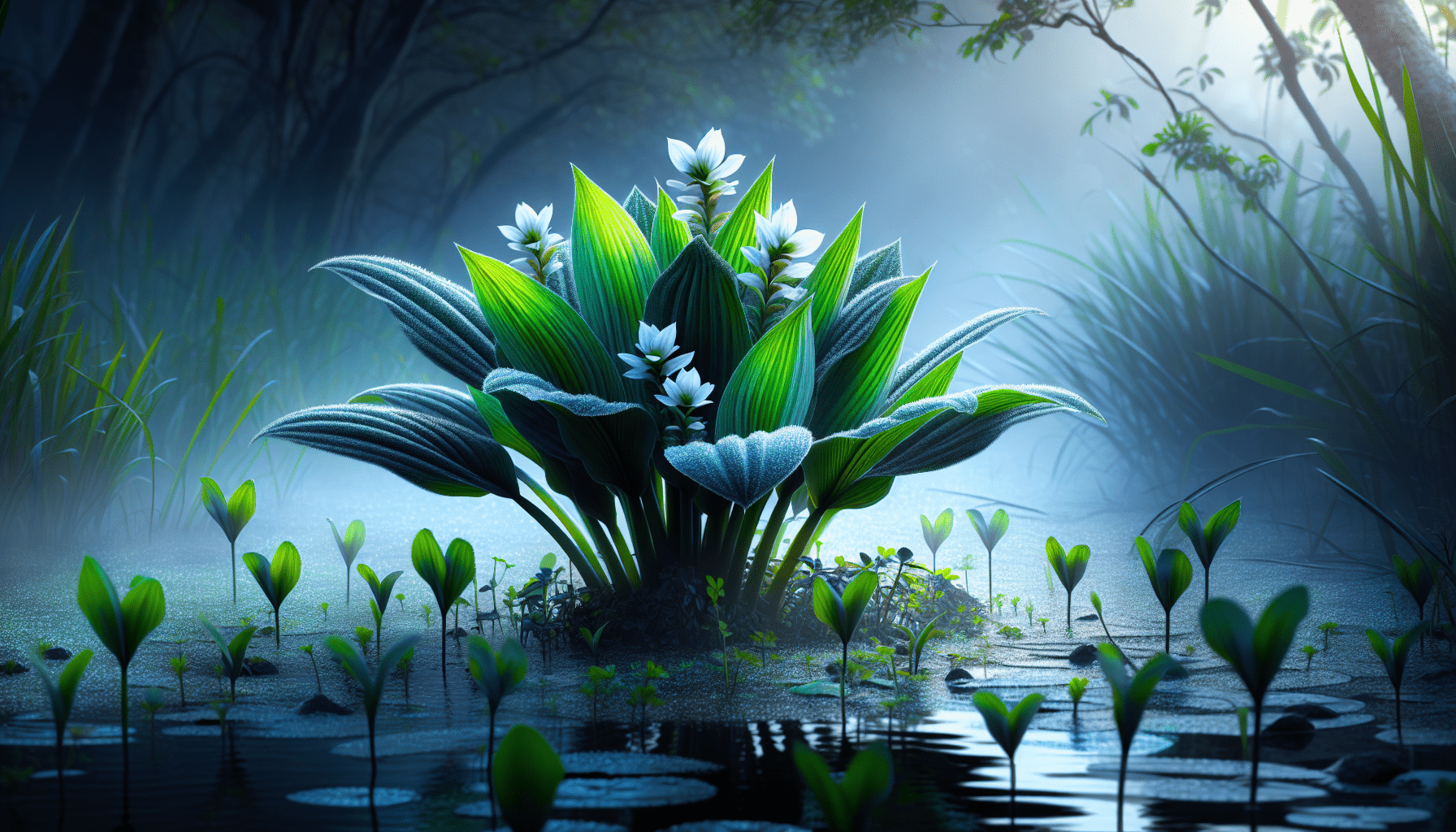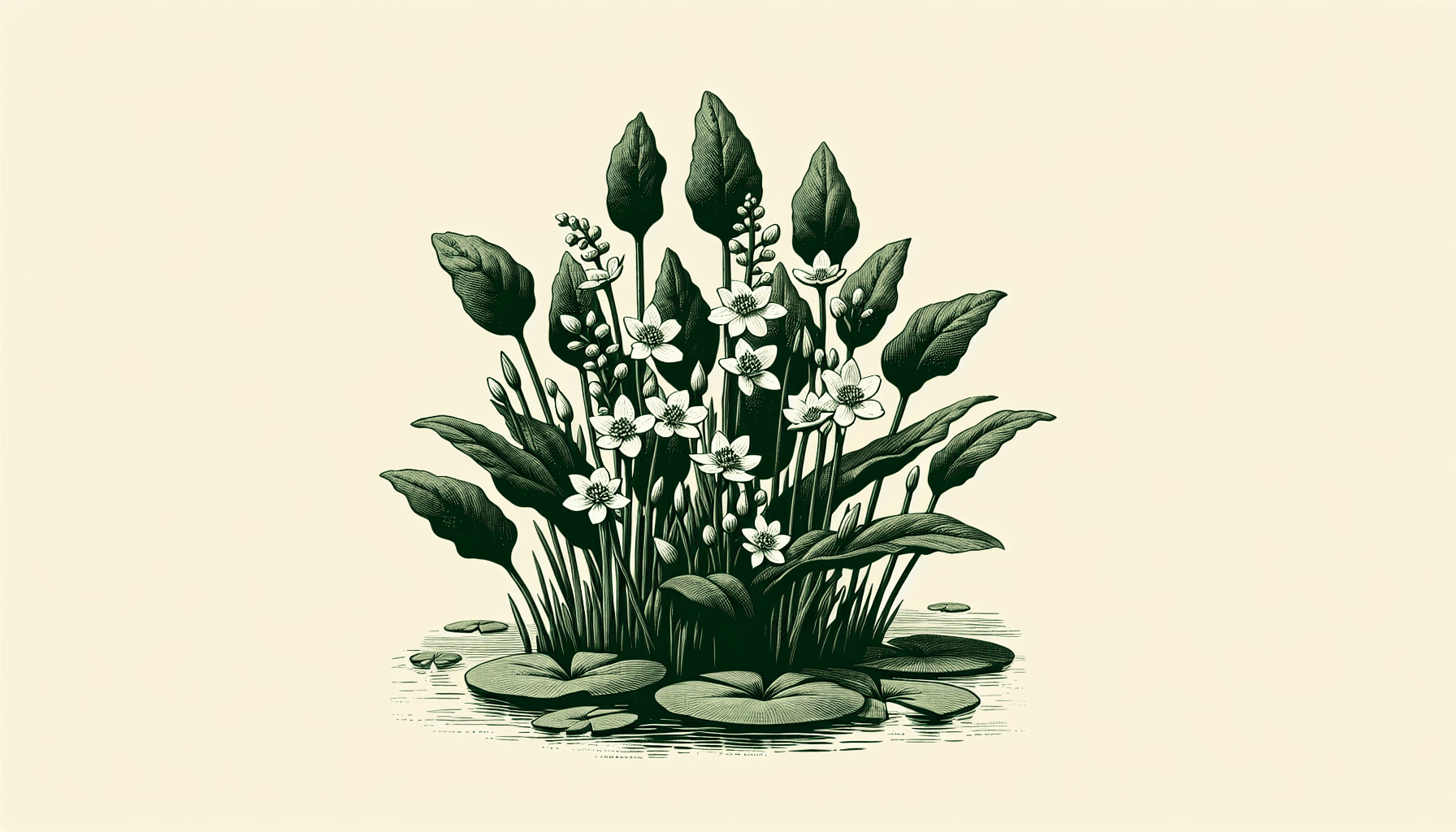In undertaking a botanical journey, your intellect will be graced by the nature-borne sophistication of the aquatic plant known as the Southern Arrowhead. This piece endeavours to elucidating its unique characteristic features, emphasizing its essential biological functions and its role within its native ecosystem. Navigate through this text to immerse yourself in an exhilarating exploration of the Southern Arrowhead, its significance in aquatic biodiversity as well as its potential implications in various scientific sectors.

Basic Description of Southern Arrowhead
Southern Arrowhead, scientifically known as Sagittaria lancifolia, is an aquatic plant native to the American Southeast. It gets its name from the distinct, arrow-shaped leaves that shoot from its base. This plant is semi-submerse, with some portion of it typically growing above the water’s surface.
Characteristics of the plant
You will note that the Southern Arrowhead is characterized by its broad, flat leaves that bear a striking resemblance to an arrowhead. They are typically a vibrant green in color, but may obtain a reddish hue under certain environmental conditions. The plant also bears white flowers with three delicate petals. The stem of the Southern Arrowhead is thick and robust, capable of anchoring the plant in various substrates.
Taxonomy and naming of the plant
In the plant taxonomy, the Southern Arrowhead belongs to the family Alismataceae. Its genus, Sagittaria, is a reference to its leaf shape that is reminiscent of an arrowhead. The species name, lancifolia, is derived from the Latin words ‘lancea’ signifying spear or dart and ‘folium’ for leaf, articulating the lance-shaped leaves of the plant.
Habitat of Southern Arrowhead
Southern Arrowhead is predominantly found in shallow wetlands, and is moderately adept at tolerating seasonal flooding and periods of drought. It is a versatile and resilient species, capable of growing in a range of aquatic environments.
Typical environments where the plant is found
You will typically find Southern Arrowhead flourishing in marshes, swamps, fenlands, along lake edges, slow-moving streams, and even in ditches with slow-draining water. These locations provide the moist, nutrient-rich environment that Southern Arrowhead thrives in.
Distribution range around the world
Though native to Southeastern United States, it has subsequently dispersed to many temperate and subtropical regions around the globe. For example, the plant has been reported in South America, Asia, and some parts of Europe. However, it is predominantly found throughout the United States, only excluding the extreme north.
Growth and Development of Southern Arrowhead
Southern Arrowhead is a perennial plant, meaning it grows and blooms over the spring and summer, dies back during the fall and winter, and then repeats the cycle from its rootstock the following spring.
Growth rate and life cycle
The growth rate of the Southern Arrowhead is generally moderate to fast, depending on its environment. It starts its life as a seed, germinating usually in early spring. Throughout spring and summer, it grows and blooms, developing distinctive white flowers. During fall, as temperatures start to drop, the above-ground parts of the plant die back. The plant then overwinters as a rhizome, and regrows in the following spring.
Seasonal changes and visual changes through the plant’s life cycle
There are significant visual changes that Southern Arrowhead undergoes throughout its life cycle. In spring, bright green shoots poke through the water’s surface. As the plant matures over summer, it unfurls its arrowhead-shaped leaves and begins to produce flowers. The plant then changes from a vivacious green to a duller hue in autumn before the above-ground parts die off entirely. As winter ends, the cycle starts anew with fresh green shoots emerging from the rhizomes left dormant.

Cultivation and Care for Southern Arrowhead
Ideal growing conditions
For the successful cultivation of Southern Arrowhead, it is essential to replicate its natural habitat as closely as possible. It requires a nutrient-rich aquatic environment with ample sunlight. A standing body of water like a pond, marsh, or wetland is ideal, but it can also be grown in water-logged pots or containers.
Water and sunlight requirements
Southern Arrowhead thrives in full sunlight, but can survive in partial shade. It needs a substantial amount of water and can be submerged with up to a foot of water over the crown.
Common pests and diseases
While generally hardy, Southern Arrowhead can occasionally be susceptible to common aquatic plant diseases, with fungi, algae, and water-borne parasites being occasional issues. As for pests, the most common adversaries are aphids, beetles, and slugs.
Reproduction of Southern Arrowhead
Flowering and pollination process
During its active growth period, Southern Arrowhead flowers profusely. These white flowers sit above the water surface and attract pollinators such as bees and butterflies. This typical pollination process allows for the production of a high number of seeds which aids in the plant’s reproduction.
Seed production and germination
Post-pollination, the flowers of the Southern Arrowhead turn into clusters of brown, nut-like seeds that fall into the water and surrounding mud. These seeds germinate under the right conditions of warmth and moisture, giving rise to a new generation of plants.
Southern Arrowhead’s Role in the Ecosystem
Role as food or habitat for other organisms
Southern Arrowhead provides valuable habitat and food resources for a number of organisms in its ecosystem. Its leaves and stems are consumed by herbivores, such as aquatic snails and caterpillars. Its flowers attract nectar-seeking insects. More broadly, its dense foliage provides cover for small fish, snails, and a range of aquatic invertebrates.
Potential impacts on its surroundings
While contributing positively to its native ecosystem, the Southern Arrowhead can pose significant threats as an invasive species in new environments, where it can outcompete other native species and disrupt the existing ecosystem balance.
Uses of Southern Arrowhead
Potential medical uses
Historically, some Indigenous peoples have used Southern Arrowhead to treat a variety of ailments. However, there is a dearth of contemporary medical research validating these uses.
Use in aquascaping and ornamental gardening
One of the main usages of Southern Arrowhead is in the field of aquascaping and ornamental gardening. Its distinctive shape, attractive flowers, and tolerance to a range of conditions make it an ideal plant for water features and ponds.
Historical and cultural uses
Various native communities have used Southern Arrowhead for nutritional and medicinal purposes. From the roots, they extracted a nutritious starch similar to potatoes, while the young shoots and seeds were typically consumed either raw or cooked.
Conservation Status of Southern Arrowhead
Current population status
Southern Arrowhead is not currently classified as a threatened species due to its wide distribution and resilient nature.
Dangers and threats facing the species
The main danger facing Southern Arrowhead is habitat loss, primarily through human activities such as land development and pollution. However, as a species, they are remarkably resilient due to their wide distribution, reproductive capabilities, and their ability to quickly colonize new habitats.
Conservation efforts in place
No significant conservation efforts are in place targeting Southern Arrowhead, given its invasive capacity in some parts of its distribution.
Scientific Research and Studies on Southern Arrowhead
Important research conducted
Research on Southern Arrowhead predominantly revolves around its invasive capacity and potential uses in water treatment systems due to its ability to absorb nutrients and heavy metals.
Findings from studies on the plant
Recent studies have shed light on the plant’s capacity to remove heavy metals from contaminated water, indicating its potential use in phytofiltration setups.
Misconceptions and Myths about Southern Arrowhead
Common misunderstandings
A common misunderstanding about Southern Arrowhead is that it’s a marginal plant. It is, in fact, a truly aquatic species that requires a significant amount of water to thrive.
Myths and legends about the plant
In terms of myths and legends, there are general beliefs in some cultures about the shape of the leaves. The arrowhead shape is believed to symbolize alertness and direction.